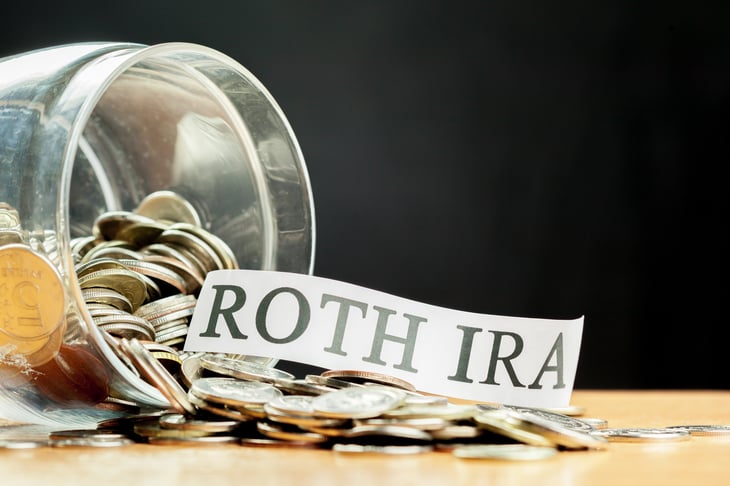
This story originally appeared on SmartAsset.com.
Saving for retirement in a 401(k) plan at work or a traditional individual retirement account can help you build wealth for the long term while enjoying some tax advantages.
Beginning at age 72, you’re required to take minimum distributions from those accounts, which means you won’t be able to defer paying taxes on earnings indefinitely. That could mean a sizable tax bill if you’re in a higher tax bracket in retirement.
If you’re wondering how to avoid taxes on RMD payouts, there are some strategies you can use to minimize taxation. A financial adviser can also offer significant benefits as you work to avoid taxes.
What Are Required Minimum Distributions?

Required minimum distributions, or RMDs, are amounts you’re required to withdraw from certain tax-advantaged accounts upon reaching age 72.
Those accounts include traditional and Roth 401(k)s as well as traditional IRAs. Previously, RMDs were supposed to begin at age 70 1/2, but that changed with the passage of the SECURE Act in 2020. It’s also worth noting that the federal Coronavirus Relief, Aid, and Economic Security (CARES) Act waived RMD requirements for IRAs in 2020.
The amount you’re required to withdraw as a minimum distribution depends on your account balance, life expectancy and other factors. The Internal Revenue Service uses a formula to determine how much individual taxpayers are required to withdraw, though it’s up to you to make sure you’re withdrawing the correct amount. Your withdrawals would then be taxed at your ordinary income tax rate.
Failing to take required minimum distributions on time can be problematic, as it can trigger a large tax bill. The IRS can impose a penalty of 50% of the amount you were required to withdraw if you fail to make your RMDs on schedule.
Avoid Taxes on RMD Payments by Working Longer

One of the simplest ways to defer required minimum distributions and the associated taxes on those withdrawals is to continue working. If you’re still working at age 72 or beyond and contributing to an employer’s 401(k), the IRS allows you to delay taking RMDs from those accounts.
This only works for your 401(k) at your current employer, however. If you have a 401(k) from a previous employer, then the RMD rule would still apply. The same is true for any traditional IRAs you contribute money to.
Whether it makes sense to continue working to delay RMD taxes depends on a variety of factors, including your health, retirement goals and overall financial situation. If you enjoy your job and have no serious health issues that prevent you from doing it, delaying retirement might make sense for you.
Avoid Taxes on RMD Payments by Donating to Charity

Another possibility for delaying or minimizing taxes on RMDs is donating some of your distributions to a qualified charity. Qualified charitable distributions, or QCDs, allow you to transfer money from an IRA to an eligible nonprofit organization. These distributions aren’t taxable, but they still count toward satisfying your required minimum distributions for the year. You can donate up to $100,000 from your IRA as a QCD to avoid taxes if:
- Your IRA custodian agrees to transfer the funds to your chosen charity on your behalf. (You can’t make the donation directly.)
- You don’t claim that donation as a charitable deduction on your taxes.
If you’re not sure whether a charity is qualified, the IRS has a tool you can use to check its status. Keep in mind that this tax-minimizing tactic only works for IRAs; you can’t use this strategy to donate RMDs from a 401(k).
Minimize RMD Taxes With a Roth Conversion

Roth IRAs can be an attractive option for saving for retirement if you want to minimize taxes. Qualified distributions from Roth IRAs are 100% tax-free and there are no required minimum distributions at all.
If you have assets in a tax-deferred account, you could avoid RMDs and their associated taxes by rolling the balance into a Roth IRA. This is done through a Roth conversion in which you essentially turn tax-deferred assets into tax-free ones.
This is something your brokerage can help with, but there’s one important caveat to know. Converting a traditional IRA to a Roth IRA doesn’t mean you can escape taxes completely. You’ll owe ordinary income tax on any assets that are converted. That could mean a large tax bill for the year in which you complete the conversion.
But you wouldn’t have to take RMDs starting at age 72, so it may be a worthwhile trade-off. Your financial adviser can help you weigh the pros and cons of using a Roth conversion to minimize RMD taxes.
Consider an Annuity to Avoid RMD Taxes

Annuities can provide you with a guaranteed stream of income in retirement. When you purchase an annuity, you’re purchasing an insurance contract. You pay premiums to the annuity company and the annuity company then makes payments to you beginning at a later date.
Qualified Longevity Annuity Contracts (QLACs) are one possibility for deferring RMD taxes. You can use the money from your 401(k) or IRA to purchase the annuity, omitting that amount from your required minimum distribution calculations. The maximum amount you can contribute to a QLAC is $135,000.
You aren’t required to begin receiving payments from the annuity until age 85, at which time they’d be subject to income tax. This strategy doesn’t eliminate the need to pay taxes on retirement income entirely but it can help you defer RMD tax payments for quite a while.
If you’re interested in a QLAC, it’s important to understand what you’ll pay and what you’ll get in return.
It’s also helpful to carefully research annuity company ratings. Choosing an annuity company that has questionable financials, for example, could backfire if the company isn’t able to make your annuity payments back to you when the time comes.
This is something else you could discuss with your financial adviser if you’re unsure where an annuity might fit into your financial plan.
The Bottom Line

Required minimum distributions can increase your tax liability in retirement, but with some careful planning there may be ways to reduce what you owe.
Considering one or all of these methods is a good starting point for how to avoid taxes on RMD payments, though you should also consider other ways in which your tax situation could be affected.
For example, working while also drawing Social Security benefits could have tax implications. Looking at the bigger tax picture can help you fine-tune your approach when managing retirement assets and income.





Add a Comment
Our Policy: We welcome relevant and respectful comments in order to foster healthy and informative discussions. All other comments may be removed. Comments with links are automatically held for moderation.